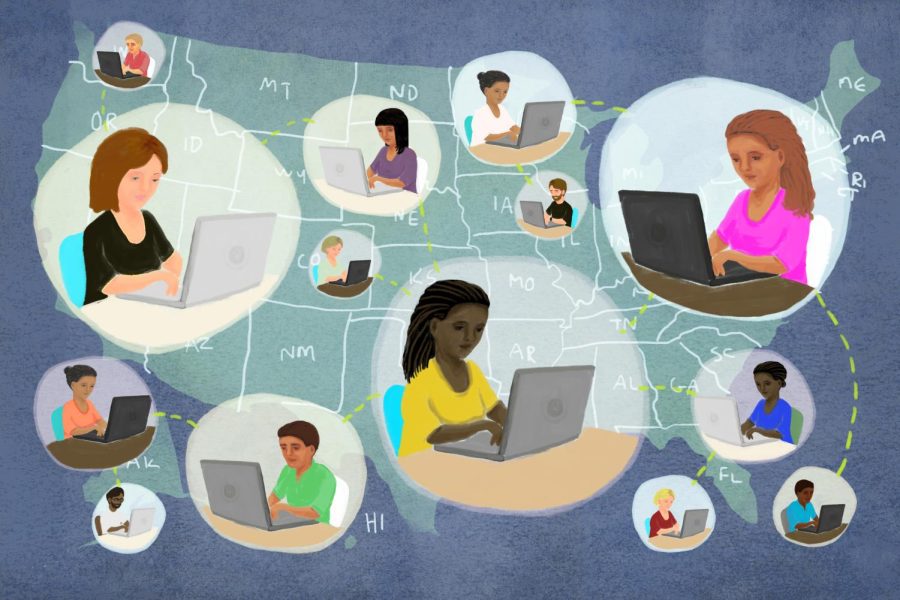Girls in Computer Science
April 28, 2022
The disparity between genders at the collegiate level is clear: only around 21% of Engineering majors are women, and only around 19% of Computer and Information Science majors are women, according to the American Association of University Women. This gender gap, many critics argue, is prevalent largely due to lack of exposure to these subjects, according to “Why Women Stopped Coding” by Steve Henn on NPR.
When it comes to the number of young women engaging in higher level computer science and programming classes, Hastings High School finds itself experiencing a similar gender gap. Recruiting girls in this field has been a struggle. According to Sorin Mihalcescu, a computer science teacher at HHS, the average number of girls in his computer science class is about seven percent, or one girl per year.
This year, there are four girls out of twelve students in his AP Computer Science class, an increase from years past. But there is no way to know if this trend will continue, and despite the improvement, this number is still proportionally low.
Steps taken at the high school level to increase female involvement could drastically change the demographics of the computer science workforce. Girls Who Code, an organization formed to close the gender gap in technology, has concluded that actions taken during high school and college to increase the number of women in computing could result in 1.6 million more women working in computing in ten years.
This increase of women in computer science is possible, and steps taken in high school can have a real impact. Mr. Mihalcescu recognizes this, and he and the district have been taking steps to recruit more girls to the discipline.
“We realized that we have to start early, […] so we went to the fourth graders.” The Hour of Code program, which the district piloted, was a one-hour introduction to computer science for younger students that has the potential to have a long-lasting effect.
“Teachers saw that students appreciated it,” said Mr. Mihalcescu, “and made it an annual event.” Mr. Mihalcescu has also held coding tutorials during Academic Field Day and Java Breakfasts when the district had late-start Fridays in an attempt to take steps forward to increase the number of girls in computer science at Hastings. The Java Breakfast, a “combination of coding in Java and a breakfast event” brought a lot of people in.
Mr. Mihalcescu mentioned that programs that are designed specifically for girls in STEM (science, technology, engineering, and math) are becoming increasingly popular.
“They’re very successful,” said Mr. Mihalcescu, “we have more and more girls applying for computer science majors than we had years ago. But the numbers, despite an increase, are still far from reaching our goal.”
Mr. Mihalcescu also notes the subtle ways he is trying to shift ideas about who computer science is for. He has a poster in his classroom representing the history of women in engineering and mathematics–pictures of potential role models for his female students. He hopes that “by seeing posters like these and being exposed to information about women who have been successful in computer science and the tech industry, [my students] can use that as a role model and be encouraged.”
The female students in Mr. Mihalcescu’s AP Computer Science class spoke about their feelings on the class and computer science in general.
Yumay Lin, a 12th grade student, said that she felt comfortable in the class mainly because she knows the other seniors. For her, it matters more if she knows the other students in the class than their genders.
But in other classes, she and Joanna Abirizk, another senior, acknowledged that the underrepresentation in certain classes of female students can feel isolating. “In AP Chemistry last year, there was that male dominated environment, and the other two girls and I sat on one side of the classroom while the male students would discuss with each other. The teachers were always respectful, but when we talked to the male students, our input was often completely disregarded.”
Computer science and other STEM fields have a long way to go to expand their female presence in places from high school to Wall Street. In the science and financial workforces, women are underrepresented as well. But steps on the local and larger-scale levels are being taken.


















